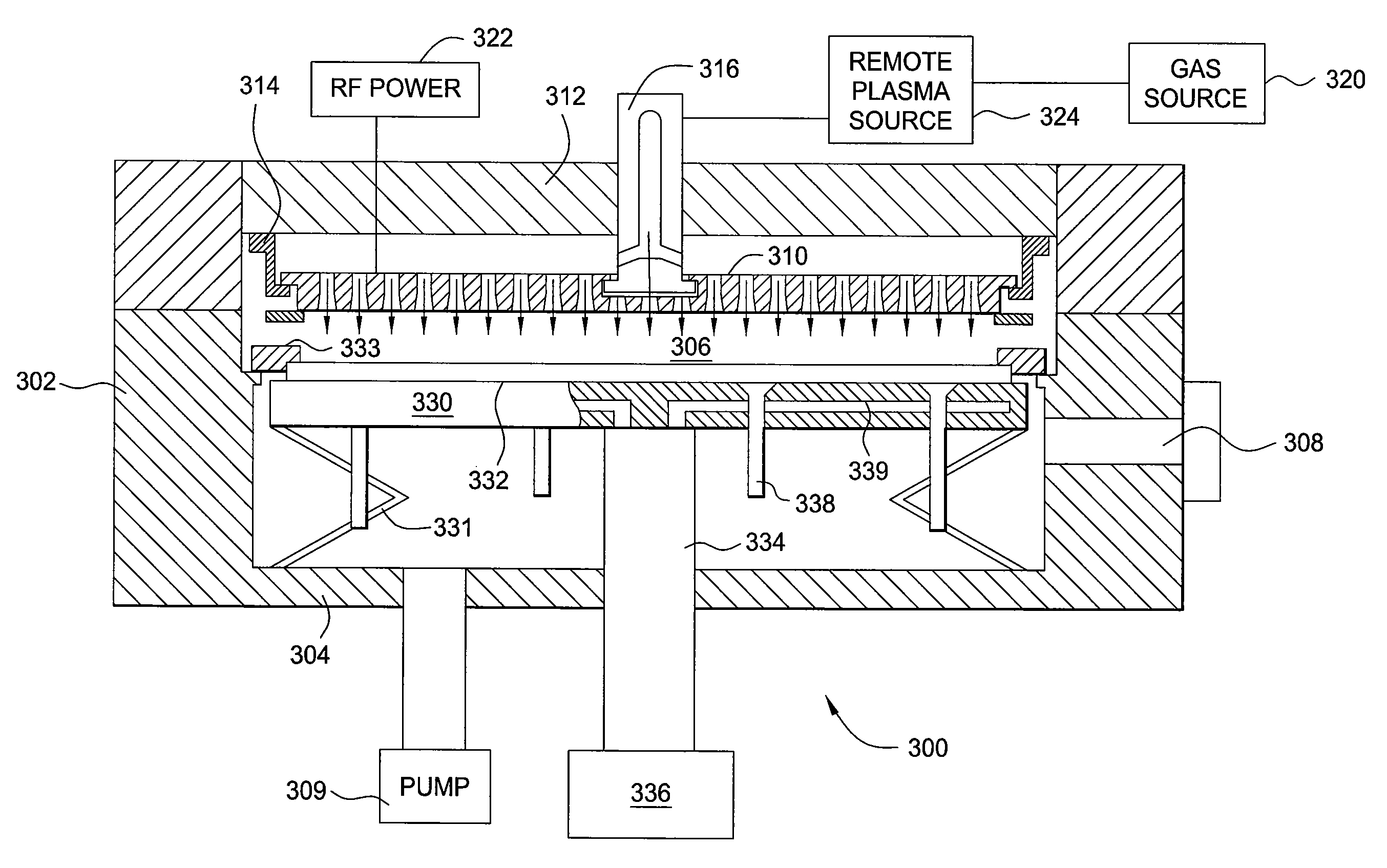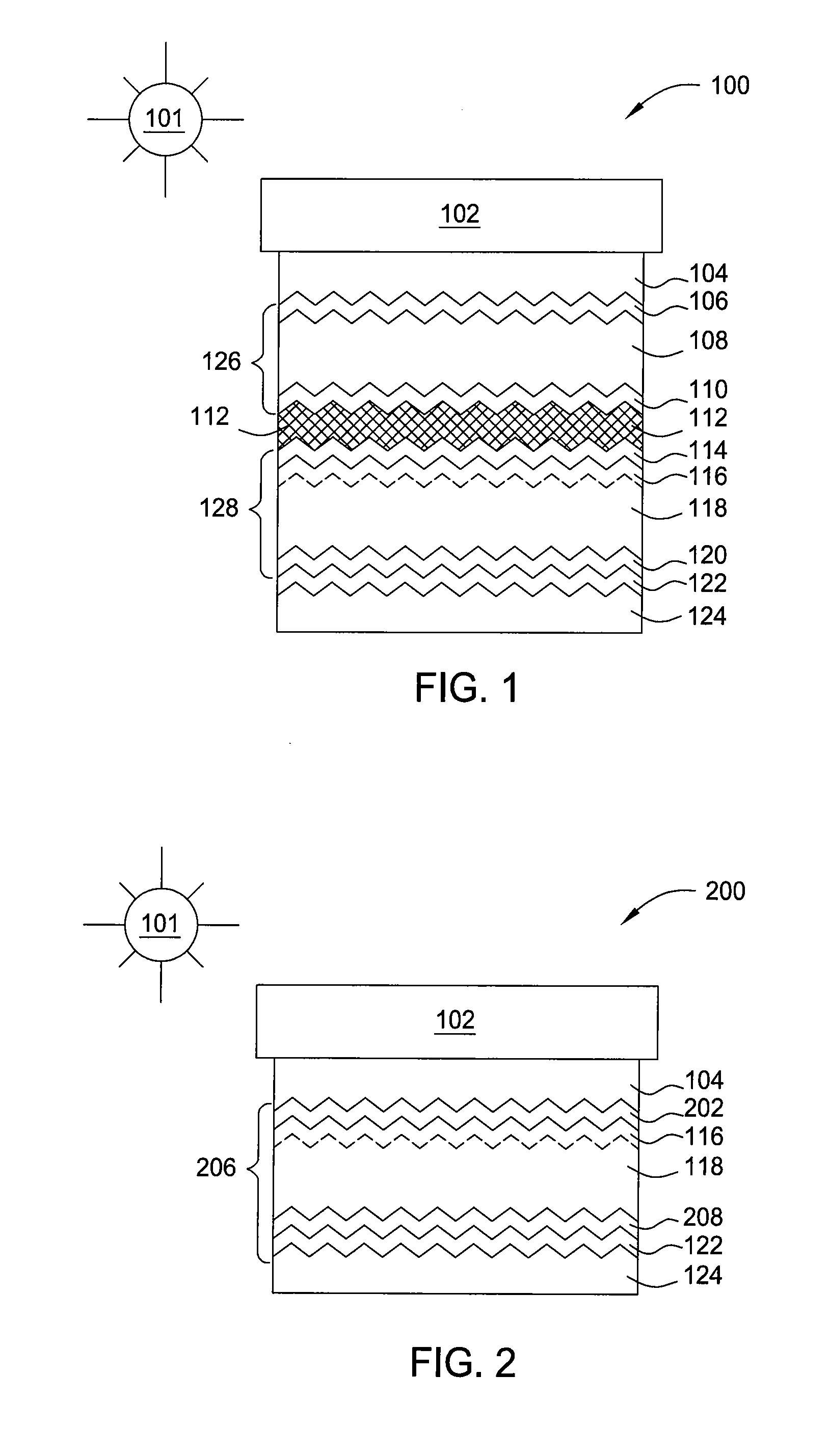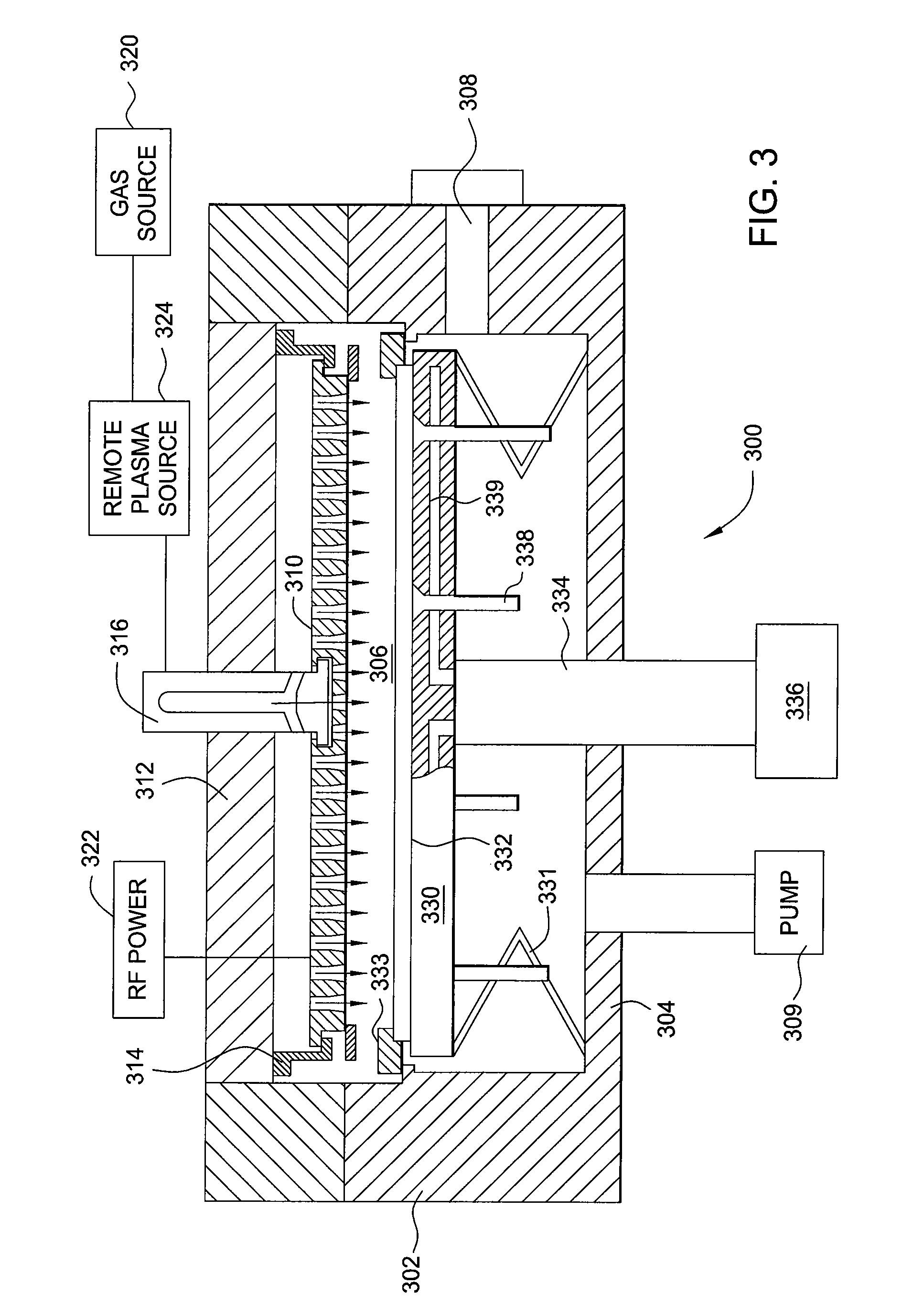Pulsed plasma deposition for forming microcrystalline silicon layer for solar applications
a microcrystalline silicon and solar cell technology, applied in the field of solar cells, can solve the problems of reducing the conversion efficiency of pv solar cells, reducing the manufacturing throughput, and increasing production costs
- Summary
- Abstract
- Description
- Claims
- Application Information
AI Technical Summary
Benefits of technology
Problems solved by technology
Method used
Image
Examples
Embodiment Construction
[0019]The present invention describes a method to deposit an intrinsic type microcrystalline silicon layer with high deposition rate, high and uniform crystalline fraction, and low manufacturing cost. In one embodiment, the intrinsic type microcrystalline silicon layer may be deposited by a plasma process having a first deposition mode and a second deposition to form an intrinsic type microcrystalline silicon seed layer and a bulk intrinsic type microcrystalline silicon layer respectively. In one embodiment, the intrinsic type microcrystalline silicon layer may be used in a multi-junction solar cell or a single junction solar cell.
[0020]FIG. 1 is a schematic diagram of an embodiment of a multi-junction solar cell 100 oriented toward the light or solar radiation 101. Solar cell 100 comprises a substrate 102, such as a glass substrate, polymer substrate, metal substrate, or other suitable substrate, with thin films formed thereover. The solar cell 100 further comprises a first transpa...
PUM
| Property | Measurement | Unit |
|---|---|---|
| Time | aaaaa | aaaaa |
| Time | aaaaa | aaaaa |
| Time | aaaaa | aaaaa |
Abstract
Description
Claims
Application Information
 Login to View More
Login to View More - R&D
- Intellectual Property
- Life Sciences
- Materials
- Tech Scout
- Unparalleled Data Quality
- Higher Quality Content
- 60% Fewer Hallucinations
Browse by: Latest US Patents, China's latest patents, Technical Efficacy Thesaurus, Application Domain, Technology Topic, Popular Technical Reports.
© 2025 PatSnap. All rights reserved.Legal|Privacy policy|Modern Slavery Act Transparency Statement|Sitemap|About US| Contact US: help@patsnap.com



